LisbonLisboaPortugal.com
The best independent guide to Lisbon
LisbonLisboaPortugal.com
The best independent guide to Lisbon
Lisbon in March: Is it a good month to visit?
March brings Lisbon to a turning point, where winter's grey skies increasingly give way to glimpses of the bright, blue days that define the city's character. This transitional month catches the capital in a unique moment, still quiet enough to feel authentically Portuguese, yet touched by the first stirrings of spring energy. For travellers, it's the final chance to experience uncrowded monuments and neighbourhood life before Easter signals the true start of tourist season.
The rewards of visiting in March are tangible: hotel rates remain at near-winter lows, museum galleries echo with peaceful footsteps rather than tour group chatter, and locals still outnumber visitors in the traditional tasca restaurants of Alfama. The weather, while improving, demands consideration; bright mornings can dissolve into afternoon downpours, and temperatures that feel pleasant in the sun turn chilly once the sunsets. Yet when March delivers one of its perfect days, you might find yourself alone on a miradouro viewpoint or exploring Sintra's palaces under crystal-clear skies.
A successful March trip hinges on a flexible itinerary that plans for both sunny and rainy-day activities. This guide will show you how to navigate March's unpredictability, ensuring you capture the best of early spring while staying prepared for winter's occasional return.
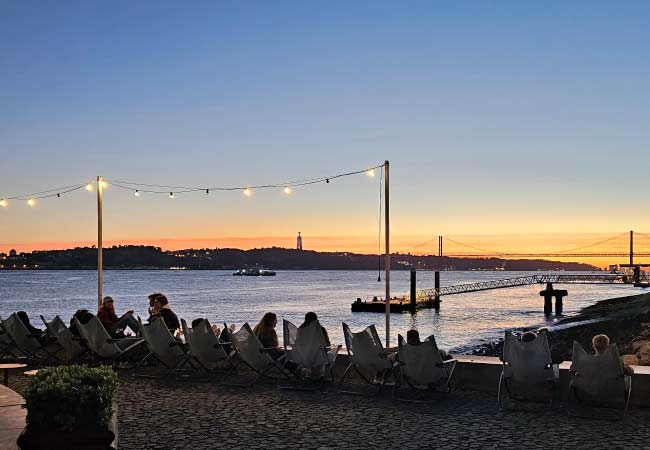
Sunset over the Tejo estuary in March
Lisbon weather in March
March marks the unpredictable arrival of spring in Lisbon, with the weather capable of being either delightfully sunny or surprisingly wet.
The average daytime high in March rises to a pleasant 19C (66F), with nighttime temperatures at a mild 11C (52F). While the city enjoys around 7 hours of sunshine per day, there are still, on average, 10 days that see some rainfall, contributing to 53mm of precipitation.
The key characteristic of March weather is its variability. Conditions in Lisbon often shift in patterns of two to three days, meaning a trip could coincide with a spell of glorious spring sunshine, or be met with a period of grey, wet weather blown in from the Atlantic.
A significant advantage of visiting in March is the increasing daylight, which provides noticeably more time to explore the city. On clear days, the sun feels genuinely warm, offering the first true promise of the approaching summer after the cooler winter months.
Insight: Lisbon typically boasts some of the best weather of any major European city in March, making it an excellent choice for an early spring city break.

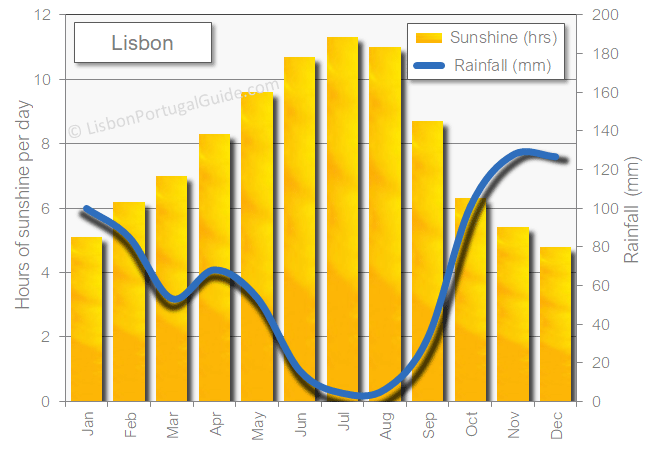
Highlights of Lisbon in March
March is a fantastic time to visit Lisbon, offering a mix of activities that cater to all weather conditions. Here are some highlights to enjoy:
• Alfama & São Jorge Castle: Climb through the historic labyrinth of Alfama’s streets to the city’s highest point, São Jorge Castle. After exploring the ancient Moorish fortress and its ramparts, descend back through the neighbourhood’s cobbled alleys to discover hidden courtyards and viewpoints. - Alfama guide.
• Belém District: Discover Portugal's maritime heritage in this grand riverside district. Visit the iconic Belém Tower and the magnificent Jerónimos Monastery, both UNESCO World Heritage sites, before tasting the original custard tarts at Pastéis de Belém, founded in 1837.- Belém district guide.
• Tram 28: Take a rattling journey through Lisbon’s most characterful neighbourhoods on this historic tram. The route is notoriously popular, and travelling in the quieter season provides a more comfortable experience and a better view of the city’s old quarters passing by. - Tram 28 guide.
• The Miradouros: As the spring days get longer, make your way to one of the city's famous viewpoints (miradouros). Spots like Miradouro de Santa Luzia, with its beautiful tiles and bougainvillea, are perfect for appreciating the afternoon light over the historic city.
• Sintra Day Trip: Escape to the fairytale town of Sintra, a UNESCO World Heritage cultural landscape. The highlight is the colourful Pena Palace, a fantastic example of 19th-century Romanticism. On a clear spring day, its hilltop terraces offer incredible panoramic views over the coastline.
• A Fado Performance: Experience an evening of Fado, Portugal's soulful and expressive traditional music. In the historic districts of Alfama or Bairro Alto, find an authentic Fado house to hear powerful singers perform songs of fate and longing - Fado guide.
• Oceanário de Lisboa: One of Europe’s most impressive aquariums, celebrated for its unique design. The vast central tank represents a single global ocean, allowing you to see sharks, rays, and other open-ocean species in a stunning, immersive environment.
• LX Factory: Discover Lisbon's contemporary side at this repurposed 19th-century factory complex. The industrial space is now a dynamic hub for independent designers, street artists, concept stores, and innovative restaurants.

What to do in Lisbon when it rains in March
The passing showers of early spring are the perfect prompt to duck inside and discover some of Lisbon’s most memorable attractions.
The Museu Calouste Gulbenkian holds a world-class private collection spanning from ancient Egyptian artifacts to Impressionist art. For a uniquely Portuguese experience, the Museu Nacional do Azulejo reveals the country's beautiful tile-making history in a former convent. The Museu Nacional dos Coches (Coach Museum) presents a spectacular collection of ornate royal carriages. The magnificent Oceanário de Lisboa is a world-class aquarium, celebrated for its enormous central tank which brilliantly creates the illusion of one vast, open ocean.
For a more interactive experience, the immersive Quake museum vividly recreates Lisbon's great earthquake of 1755 through impressive exhibits. You could also spend an afternoon at the LX Factory, a creative hub where former warehouses shelter independent design shops, art galleries, and unique restaurants. Another great option is joining a Portuguese cooking class, where you can learn the secrets behind local dishes or master the art of the perfect pastel de nata.
Shopping provides another excellent escape from the weather. For hundreds of stores under one roof, head to the large Colombo Shopping Centre. For a more traditional experience, explore the elegant boutiques and historic bookshops of the Chiado district. Finally, a wet day is the best time to find a seat on the famous Tram 28, watching the city’s oldest neighbourhoods slide by from the dry comfort of your window.
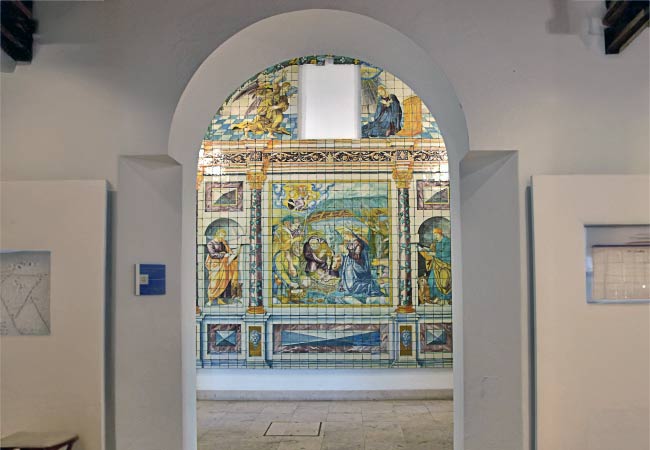
Have you booked your hotel yet?
March offers fantastic value for accommodation, but the best places still book up first. Enter your dates on the map below to see live prices and availability across the city.
A Suggested itinerary for a March holiday to Lisbon
This 5 day itinerary is designed for a visit in March, when the city welcomes the first signs of spring. To make the most of your visit, it is highly recommended that you remain flexible and plan the day trip to Sintra for the day with the clearest weather forecast.
Day 1: The Historic Heart – Alfama and Baixa
The first day is dedicated to Lisbon’s historic core, where March often brings the first signs of spring, making it ideal for exploring on foot. The journey begins in Alfama, the city’s oldest and most atmospheric district, before descending into the grand, orderly streetscape of the Baixa.
The natural starting point is the Castelo de São Jorge, whose ancient fortified walls offer some of the finest panoramic views over the city’s terracotta rooftops and the Tagus River. From the castle, the best way to experience Alfama’s medieval character is to wander down through its maze of narrow, cobbled streets. Along the way, you will encounter the fortress-like Sé de Lisboa, the city's imposing cathedral. At the Miradouro de Santa Luzia, with its tile panels and bougainvillea-covered pergola, you can pause to take in the classic view over the district. Another way to experience the area is aboard the famous number 28 tram, which expertly navigates the tight turns and steep gradients of these historic quarters.
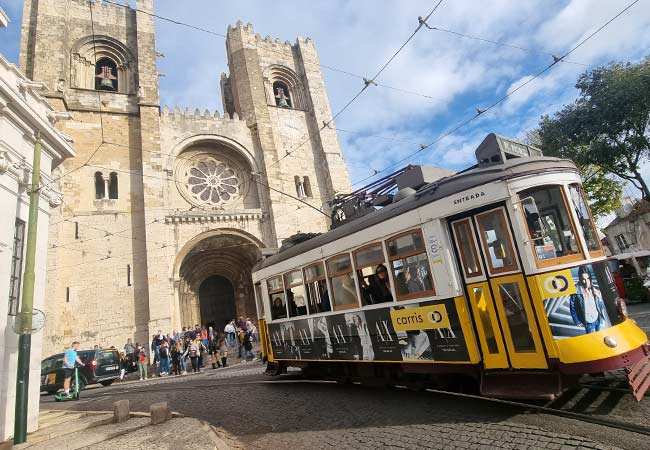
From Alfama's medieval alleys, the afternoon is spent in the orderly expanse of the Baixa district. A model of 18th-century urban planning, its grid of neoclassical streets was built after the great earthquake of 1755. The district’s central hub is Rossio Square, a lively public space with wave-patterned cobbles and baroque fountains. A unique feature of the area is the Elevador de Santa Justa, a 19th-century lift whose wrought-iron filigree structure offers a distinct perspective over the rooftops.
The main pedestrian thoroughfare of Rua Augusta serves as the district’s spine, leading from the centre down towards the river. It passes through a majestic triumphal arch into the Praça do Comércio, a vast and magnificent square that serves as Lisbon's formal entrance from the river. To conclude the day’s exploration, a visit to one of the tiny, traditional bars near Rossio for a glass of ginjinha, the city’s cherished sour cherry liqueur, is an essential local experience.
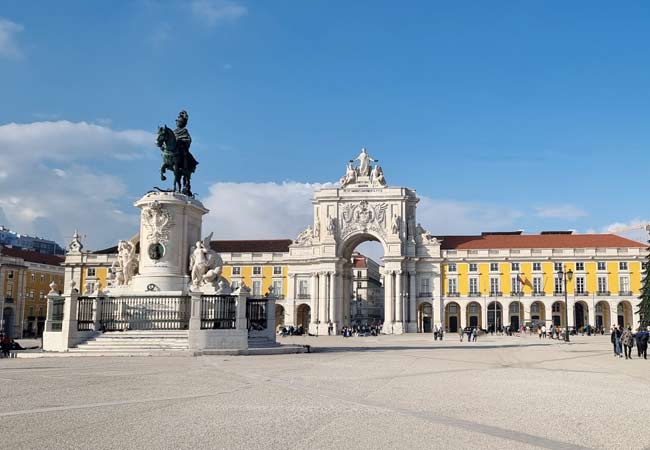
Day 2: The Age of Discoveries in Belém
The second day is devoted to the waterfront district of Belém, the historic launching point for Portugal’s 15th and 16th-century voyages of discovery. The pleasant March weather is perfect for exploring this area, which contains a remarkable concentration of national monuments celebrating the nation’s maritime heritage.
The exploration begins at the Mosteiro dos Jerónimos, an architectural masterpiece funded by the wealth of the spice trade and now a UNESCO World Heritage site. Its ornate Manueline style is uniquely Portuguese, with incredibly detailed stonework depicting maritime motifs. Along the riverfront stand two other iconic monuments. The elegant 16th-century Torre de Belém once guarded the entrance to the harbour and has become a symbol of the city. Nearby, the modern Padrão dos Descobrimentos is a striking monument celebrating the key figures of the era, from explorers to cartographers.
No visit to the district is complete without tasting the original custard tarts at Pastéis de Belém, where they have been made from a guarded secret recipe since 1837. For art enthusiasts, the nearby Berardo Collection Museum offers an excellent indoor option, housing a world-class collection of modern and contemporary art.

The Torre de Belém
As the day progresses, a short journey brings you to Lisbon's contemporary creative heart at the LX Factory in the Alcântara district. This sprawling industrial complex has been repurposed into a vibrant hub of independent shops, artist studios, and innovative restaurants. It offers a fascinating look at the city’s modern, entrepreneurial spirit and is the perfect place to spend the late afternoon before choosing one of its many unique venues for dinner.
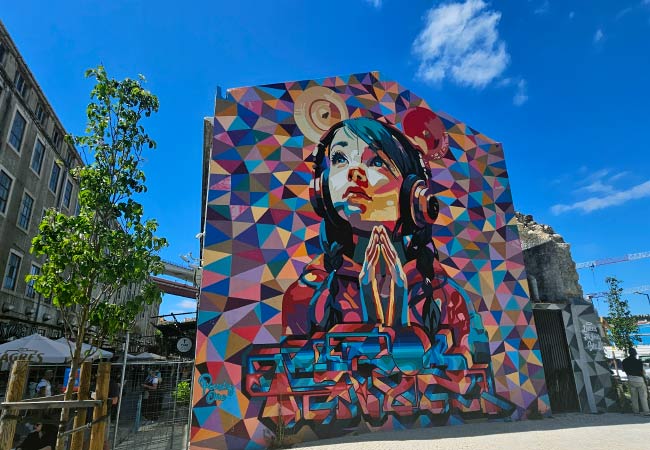
Day 3: The Fairytale Palaces of Sintra
A day trip to Sintra is an excursion into a town of fairytale palaces and mystical estates, set within the cool, forested hills of the Serra de Sintra. Easily reached by a 40-minute train journey from Lisbon’s Rossio Station, this UNESCO World Heritage landscape served as a summer retreat for Portuguese royalty for centuries, and the pleasant March weather is ideal for exploring its magnificent grounds.
To fully appreciate Sintra's magic, it is best to select two or three main attractions for a single day's visit. The most popular choice is the Palácio da Pena, a fantastical Romanticist castle that crowns the region's highest peak. Its vibrant collage of colours, whimsical turrets, and eclectic architectural styles create an unforgettable sight. A different but equally essential experience is the Quinta da Regaleira, an enigmatic estate where the main attractions are the gardens, filled with hidden tunnels, symbolic grottoes, and a famous initiation well that spirals deep into the earth.
Other key sights offer different perspectives on the area's history. The ruins of the Castelo dos Mouros (Moorish Castle) snake along a high mountain ridge, and its ancient stone walls offer rugged beauty and commanding views. Down in the town centre, the Palácio Nacional de Sintra is recognisable by its two giant conical chimneys and stands as Portugal's best-preserved medieval royal palace. Navigating the steep hills between these attractions is best done using the local tourist bus, which provides a convenient link between the train station and the main sites.
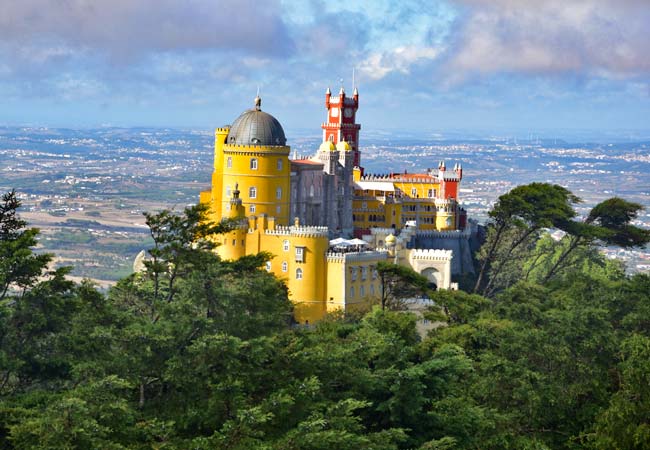
Day 4: Bohemian and Elegant Lisbon
This day is dedicated to the interconnected neighbourhoods of Chiado, Príncipe Real, and Bairro Alto, the heart of Lisbon’s fashionable and bohemian life. The journey begins in the elegant cultural centre of Chiado and gradually moves uphill, culminating in the vibrant nightlife of Bairro Alto.
The morning starts in Chiado, Lisbon's traditional hub for culture, shopping, and intellectual life. Its elegant streets are home to historic establishments such as Livraria Bertrand, the world's oldest operating bookshop, and A Brasileira, the classic café famed for its association with the poet Fernando Pessoa. It is an ideal area for browsing in sophisticated shops and soaking up the refined atmosphere.
From Chiado, the exploration continues to the fashionable Príncipe Real district, known for its concept stores, independent boutiques, and grand 19th-century mansions. A highlight is the Embaixada shopping gallery, housed within a stunning neo-Moorish palace where each room has been converted into a curated shop. The tranquil Príncipe Real Garden, with its magnificent ancient cedar tree, offers a peaceful spot to relax.
In the afternoon, make your way to the Bairro Alto. While quiet by day, this is the perfect time to explore its narrow grid of streets and visit the Igreja de São Roque. The church’s plain Jesuit facade conceals one of the most astonishingly opulent baroque interiors in Europe. As evening approaches, the area undergoes a complete transformation. Find a spot at the popular Miradouro de Santa Catarina to watch the sunset over the river and the 25 de Abril Bridge. Afterwards, join the crowds as Bairro Alto comes alive, with dozens of small bars opening their doors and a lively atmosphere spilling out onto the cobbled streets.
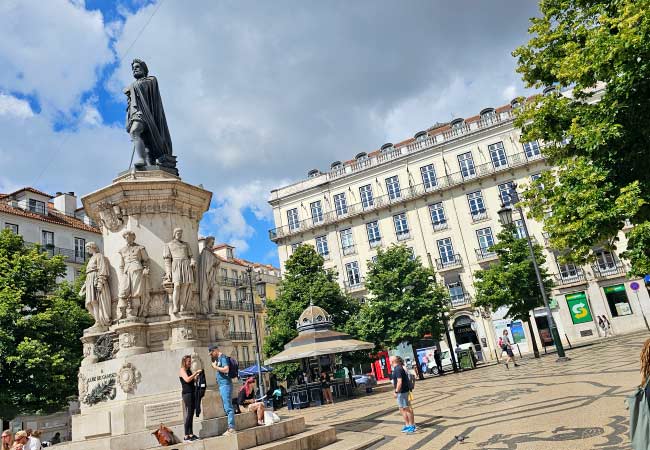
Day 5: World-Class Art and Modern Architecture
The final day offers a journey that provides fresh perspectives on Lisbon, first by viewing the city from the heights of the southern shore and then by exploring its futuristic eastern waterfront. This contrast showcases both the grand scale of Lisbon's historic landscape and its ambitious, modern vision.
The morning begins with a trip across the Tagus River. A short ferry ride from the Cais do Sodré terminal takes you to Cacilhas, a town known for its excellent waterfront seafood restaurants that offer a more local atmosphere and are perfect for lunch. From Cacilhas, a bus journey leads up to the towering Cristo Rei (Christ the King) monument.
Inspired by its famous counterpart in Rio de Janeiro, the statue itself is impressive, but the primary draw is the unparalleled panoramic view from its observation deck. From this vantage point, the entire city of Lisbon is laid out across the river, providing a magnificent perspective on the iconic 25 de Abril Bridge and the city's seven hills, from the castle in Alfama to the monuments of Belém.
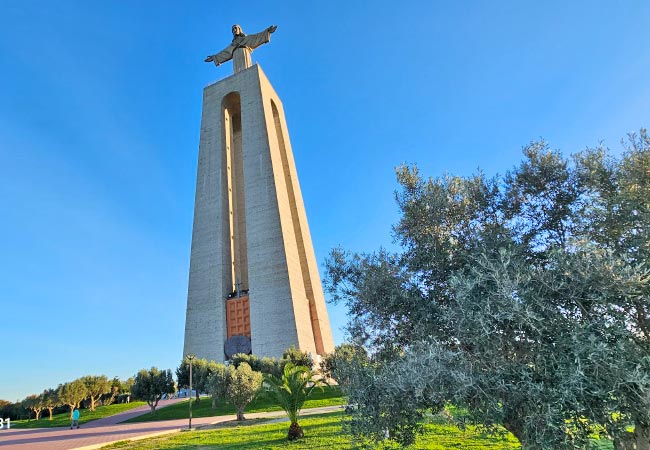
In the afternoon, travel from the cultural tranquillity of the museum to the city's modern edge at Parque das Nações. This district, built for the 1998 World Expo, is defined by its striking contemporary architecture. The main attraction is the spectacular Oceanário de Lisboa, one of the world's finest aquariums, celebrated for its massive central tank representing the global ocean. The area is also an open-air showcase of modern design, from the soaring, skeletal structure of the Calatrava-designed Oriente Station to the waterfront gardens. A ride on the cable car provides sweeping views over the Tagus River and the Vasco da Gama Bridge, offering a final, forward-looking perspective on the city.
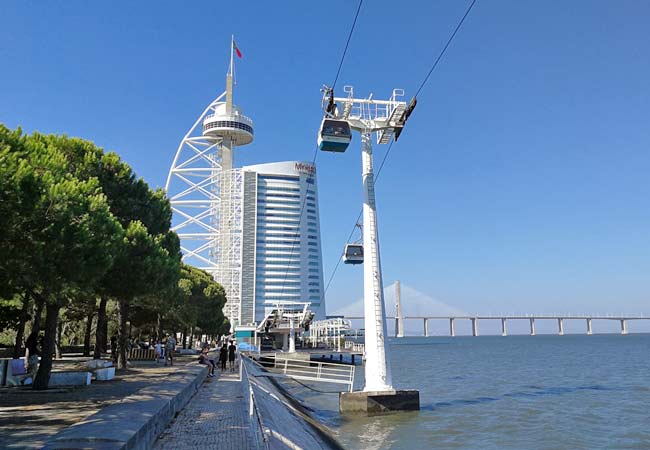
Finding bargain flights and accommodation in March
March's position in the shoulder season makes it one of the best months for securing good value flights and accommodation in Lisbon. For the best flight prices, aim to book at least two to three months in advance. Airfares are consistently lower for mid-week travel, with departures from Tuesday to Thursday typically offering significant savings over more popular weekend flights.
When booking with low-cost carriers, a useful strategy is to select flights departing in the morning or early afternoon. These airlines often operate with tight turnaround times, and any initial delay can have a knock-on effect throughout the day. Consequently, evening and night-time flights carry a higher risk of significant delays or cancellations.
For accommodation, March can be an excellent time to find promotions, particularly in mid-range and high-end hotels looking to increase occupancy before the peak season. It is common to find last-minute rate reductions of 30-40%. A key tactic is to book rooms with a free cancellation policy. This allows you to secure a good initial option while continuing to monitor for better deals on various booking platforms as your travel dates approach.
What clothes to take to Lisbon in March
Lisbon in March offers mild weather with occasional unpredictability, making thoughtful packing essential. Layering is the most practical approach for the variable conditions you'll encounter.
Pack cotton or linen basics such as t-shirts and light trousers for the warmer parts of the day. However, March weather can be changeable, so include long-sleeved shirts and a couple of lightweight jumpers for when temperatures dip.
A quality waterproof jacket is essential - March showers are common and can arrive without warning. Choose one that breathes well, as Lisbon's hilly terrain and cobbled streets involve considerable walking. Comfortable walking shoes are absolutely crucial for exploring the city properly.
Sunglasses are worthwhile for the sunny spells that punctuate March days. A compact umbrella will prove invaluable during sudden downpours, and a comfortable day bag will make city exploration much easier.
Discover more of Lisbon with our most popular guides
If you've found our content valuable, we'd welcome your support.
The digital publishing landscape has evolved significantly. As a small independent publisher, we face growing challenges. Search engines increasingly favour paid content over organic results, while AI-generated content often reproduces original work without attribution.
To support our work, please consider bookmarking this page (press Ctrl + D) for quick access. If you find an article helpful, we'd be grateful if you'd share it with friends on social media.
For specific questions, please see our Reddit community at r/LisbonPortugalTravel.
Should you notice any outdated or incorrect information, please contact us at [email protected]
Thank you for helping us continue to provide valuable content in an increasingly challenging digital environment.
A complete list of all of our Lisbon articles
If you've found our content valuable, we'd welcome your support.
The digital publishing landscape has evolved significantly. As a small independent publisher, we face growing challenges. Search engines increasingly favour paid content over organic results, while AI-generated content often reproduces original work without attribution.
To support our work, please consider bookmarking this page (press Ctrl + D) for quick access. If you find an article helpful, we'd be grateful if you'd share it with friends on social media.
For specific questions, please see our Reddit community at r/LisbonPortugalTravel.
Should you notice any outdated or incorrect information, please contact us at [email protected]
Thank you for helping us continue to provide valuable content in an increasingly challenging digital environment.



































